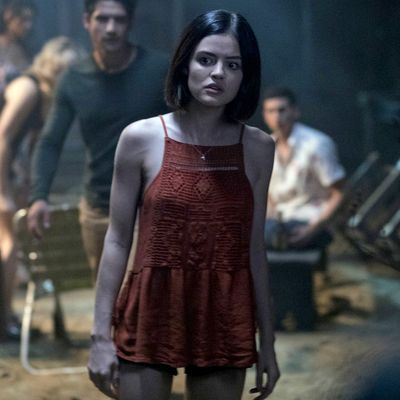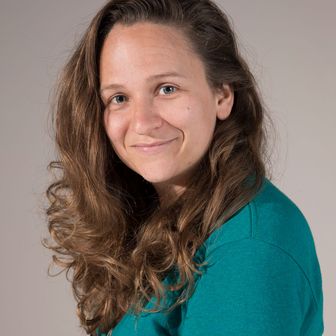
As Vulture reported last year, the forthcoming body-count romp Truth or Dare was pitched to Blumhouse head Jason Blum by Universal’s co-president of worldwide marketing, Michael Moses, as nothing more than a title. Moses had no plot, no director, no star, no storyboards — just those three little words. Blum liked the idea, too, and it entered into the production pipeline under the distribution deal the two studios have with one another, a pact that brought you Split, Get Out, and the forthcoming First Purge.
Until now, we had similarly scant information on just how, exactly, these three little words transformed into a glossy two-studio co-production. So we called up Truth or Dare writer and director Jeff Wadlow to find out how you make a movie based solely on a title.
Getting the Job
Wadlow’s involvement with Truth or Dare started as so many things do in Hollywood: with a meeting. The director got the brief from Blum (as in, he was told the film’s title), and proceeded to spin up a cold open on the spot. “The movie, if you really think about it, was a dare,” explains Wadlow. “I met with Jason and he said, ‘Do you want to make a movie called Truth or Dare?’ And I said ‘Do you have a script? Do you have anything?’ He said, ‘Nope!’ And basically in the room, I pitched out the opening scene when Giselle (Aurora Perrineau) sets that woman on fire in the gas station. I just came up with that on the spot and he was like, “That’s amazing! What happens next?’ And I said, ‘I don’t know! I’m just making this up!’”
It helped, too, that Wadlow had a broad background of experience in filmmaking, having written, directed, produced, acted, and even notched a few credits as “miscellaneous crew” over the course of his career. With Blum working off his “high-concept, low-budget” philosophy (think big world-building in a tight package, like the Purge, Paranormal, or Insidious franchises), and Wadlow’s experience working at various budget levels (from small-scale horror like Cry Wolf to pseudo-superhero fare like Kick-Ass 2), the producer trusted that he could work within Blumhouse’s constraints. “I think he just liked me. We had a great meeting, and he could tell that I was both a director and a producer, that I understood the logistics involved in filmmaking,” Wadlow says. “I know how they have to put it all up on the screen, and so I think he thought I would be a good filmmaker to work with, given his model.”
Finding the Story
So you’ve got a movie and a title! Now what? Over the past few years, Wadlow had been working in TV as a producer and occasional writer for Bates Motel and The Strain. Drawing from what he learned watching Strain’s Carlton Cuse run a writers room, the filmmaker assembled a group of scribes to hammer out the story, instead of just going it alone. “There is this misconception that when there’s more than one writer, the thing is sort of cobbled together,” says Wadlow, who co-wrote the script with Jillian Jacobs, Michael Reisz, and Christopher Roach. “The truth is, we approached it as fans of filmmaking, and thought about all the different stories that we were telling. There was more than one story at play, and we each pitched different ideas. Certainly as writer-director, I kind of had final say, but it was a good way to field test things and see what was working, what wasn’t, and pull it together in a very quick fashion.”
With his writers room assembled, Wadlow and his team then broke the story open by drilling into why the game of Truth or Dare has had enough appeal to sustain itself as a time-honored party tradition (besides just giving people an excuse to make out). “What we did was we just sat around and talked about the game,” explains Wadlow. “Why does the game work? Why do people love the game? We started to really bear down on things like, the game is so popular because it exposes your secrets. It forces you to face your fears. It gives you permission to do things you wouldn’t normally do and say things you wouldn’t normally say. It puts you in sort of an antagonistic dynamic with your closest friends. Once you start talking about these things, the movie almost presents itself.”
Working With Limits
Wadlow has brought original stories to screen before, in addition to reworking script drafts from other writers, and shooting movies based on preexisting IP. But he’d never just been handed a what amounted to a prompt from a studio — almost like a film-school project — and set out to make it into a full movie. Taking it as something of a challenge, though, appealed to the problem-solving aspect of filmmaking that Wadlow enjoys.
“One of the things I love about making movies this way is you get put in a box, and the only way out is up. You have to make smarter choices,” says the director, adding that the restrictions in place — a trim budget, the requisite centrality of a party game as the driving plot mechanism — were alleviated by the broad creativity afforded in a horror picture. “What I think is happening right now is all the other genres demand much higher budgets, where as a horror film you can make with a smaller budget. And what that does is it gives you freedom, and it gives you the flexibility to tell interesting stories or ask interesting questions.”
Adjusting on the Fly
Despite spontaneously ginning it up in the room while pitching himself to direct Truth or Dare, Wadlow’s intro scene with the Quickie Mart immolation made it all the way to final cut. The big finale, however, changed drastically right before the director started principal photography. “About three weeks before we started shooting, we had a very different third act for the film,” says Wadlow, who knew he had to stay nimble on the modest budget. “I showed the script to my old writing partner, who wrote and produced Cry Wolf with me. I asked him to read it, as we do for each other, and he said he loved the script, but thought the third act was a little flat. So I wrote a whole new third act just to amp it up.”
Even though the final-hour rewrites were meant to raise the stakes, Wadlow’s intent was to make a scary movie that carried emotional weight in addition to serving up sight gags like watching Lucy Hale ask her best friend to break her hand with a hammer. It’s easy to fill horror movie with blood, after all, but it’s giving it a soul that’s the real challenge. “A lot of horror movies, it’s just about the gore and the body count, and that’s just not the kind of genre piece that I’m interested in,” says Wadlow. “Probably my favorite horror movie of all time is Scream. I love it, because for me it’s not about body parts. It’s about engaging the audience in a conversation and making them feel like they’re part of the story that’s being told.”


